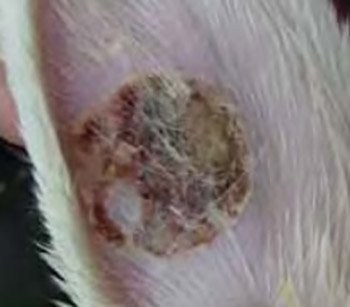Animal model of thermal injuries
DOI:
https://doi.org/10.17305/bjbms.2003.3492Keywords:
animal model, thermal injury, rabbit, rat, skinAbstract
Experimental studies of burns require the use of different animal models with the aim to imitate and reproduce pathophysiological conditions. The aim of this work was to establish experimental model of thermal injury.
New Zealand rabbits, weighted from 1.8 kg to 2.3 kg, were utilised during our study. Another, also utilized, animal types were laboratory Rattus rats, species Wistar, albino type, females with body weight of about 232 g. All animals were from our own litter (Institute of Pharmacology, Clinical Pharmacology and Toxicology, Faculty of Medicine in Sarajevo). During the experiment, animal were properly situated in adequate cages and rooms, at the controlled temperature (22 ± 2°C), and in the air with normal humidity level. All animals took food and water ad libitum.
Rabbits received anesthesia - intravenous pentobarbital sodium in a dose of 60 mg/kg, and then, hair from the upper side of the each rabbit ear was removed and burns were caused by a metal seal in the same manner as in rats. Rats were primarily anesthesied by intraperitoneal pentobarbital sodium in a dose of 35 mg/kg, and then, their hair was removed from the scapula zone (5 cm x 5 cm). Burns were caused by contact with a round metal seal, heated at 80°C in a water bath, during the period of 14 seconds together with contact thermometer control. Round metal seal (radius: 2.5 cm; weight: 100 g; surface: 5 cm2) was just placed on the rat skin without any additional pressure. In order to maintain the microcirculation in the burn wound and to reduce the conversion of partial-thickness skin burns to the burns of the full-thickness skin, all burn wounds were immediately sunk in the 4°C water. Subsequent to that procedure, all animals were individually situated in the proper cages, and left to rest for 4 hours with a constant cautious monitoring of the wound development and animal general state.
Downloads














